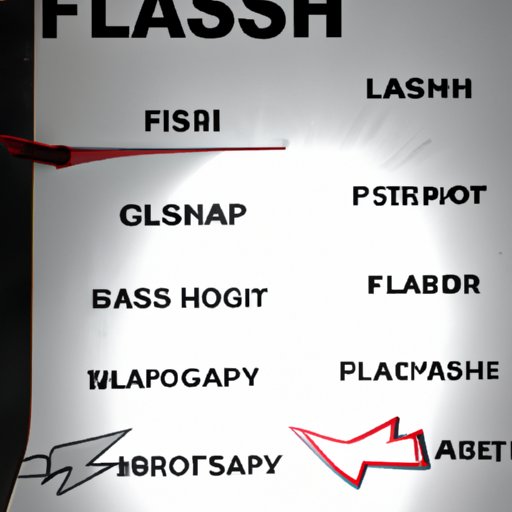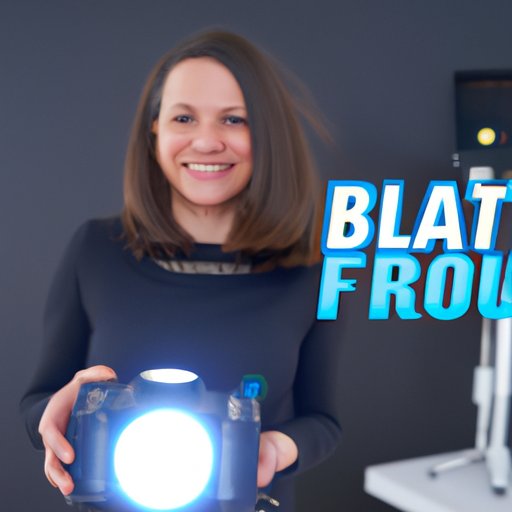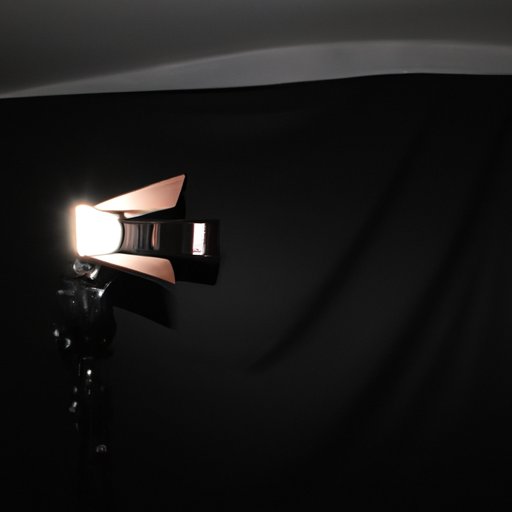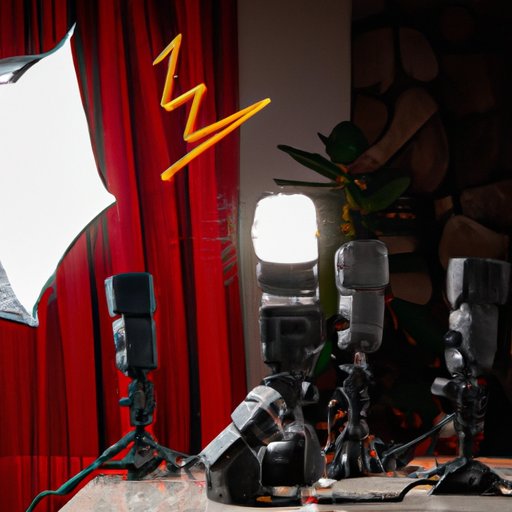Introduction
Flash photography is a type of photography that utilizes artificial light sources to brighten a scene or subject. It can be used in a variety of ways, from illuminating a dark room to freezing motion in sports photography. The purpose of this article is to explore the basics of flash photography, discuss its different uses, offer tips for taking great flash photos, and showcase examples of different styles of flash photography.

Outlining the Basics of Flash Photography
Before exploring the different uses for flash photography, it’s important to understand the basics of how it works. Two key components of flash photography are shutter speed and aperture. Shutter speed determines how long the camera’s shutter remains open, while aperture refers to the size of the opening in the lens that allows light to pass through.
The type of flash you use is also important to consider. There are two main types of flashes: on-camera flashes and off-camera flashes. On-camera flashes attach directly to the camera body and are typically used for fill flash. Off-camera flashes are separate units that are not attached to the camera and are often used for more creative lighting setup. In addition, there are also high-speed sync flashes which allow photographers to shoot at higher shutter speeds.
Different flash modes can also be used to achieve different effects. Common flash modes include auto, manual, and TTL (through-the-lens). Auto mode will automatically adjust the flash output based on the ambient light conditions, while manual mode allows the user to manually adjust the flash output. TTL mode uses the camera’s built-in light meter to measure the ambient light and adjust the flash output accordingly.
Exploring Different Types of Flash Photography
One of the most common uses for flash photography is on-camera flash. This type of flash is typically used as a fill light to brighten up shadows or add a bit of sparkle to the eyes. On-camera flash is also commonly used for indoor portraits, as it can help to reduce the amount of noise created by using a higher ISO setting.
Off-camera flash is another popular type of flash photography. This type of flash is great for creating dramatic lighting effects and adding dimension to a scene. It can also be used to create soft, natural-looking light for portraiture or product photography. High-speed sync flash is a type of off-camera flash that allows photographers to shoot at faster shutter speeds, which can be useful for capturing fast-moving subjects.
Discussing Creative Uses for Flash Photography
Once you have a basic understanding of flash photography, you can start to explore some of the more creative uses for it. One of the most common uses for flash is to freeze motion. By using a short duration flash, you can capture a moment in time that would otherwise be blurred due to the speed of the subject. This technique is commonly used in sports and action photography.
Creating dramatic portraits is another great way to utilize flash photography. By using multiple flashes set at different angles, you can create unique lighting effects that bring out the best in your subject. Color gels can also be used to add a creative flair to your images, such as using a red gel to give your photos a warm, romantic feel.

Offering Tips for Taking Great Flash Photos
Taking great flash photos requires more than just knowing the basics of flash photography; it also involves having the right gear and knowing how to use it. Investing in quality gear is essential, as it will ensure that your photos have the best possible quality. Quality flashes, tripods, and light modifiers can make all the difference when it comes to taking great flash photos.
Using diffusers is also an effective way to soften the light from your flash. Softboxes, umbrellas, and other diffusers can help to create a softer, more natural-looking light that is much more flattering for portrait photography. Experimenting with different lighting angles can also help to create interesting lighting effects that add depth and drama to your photos.

Showcasing Examples of Flash Photography
Flash photography can be used in a variety of ways, from documentary style to editorial and sports/action photography. Documentary style flash photography typically utilizes natural light along with one or two off-camera flashes to provide additional illumination. Editorial style flash photography often uses multiple flashes set at different angles to create dramatic lighting effects.
Sports/action photography relies heavily on the use of flash to freeze motion. By using a short duration flash, photographers can freeze a moment in time that would otherwise be blurred due to the speed of the subject. Flash photography can also be used to add creative touches to sports photos, such as using colored gels to add a pop of color to the image.
Conclusion
Flash photography is a powerful tool that can be used in a variety of ways. From illuminating a dark room to freezing motion in sports photography, flash has many applications. Understanding the basics of flash photography, exploring its different uses, offering tips for taking great flash photos, and showcasing examples of different styles of flash photography are key to becoming a successful flash photographer.
By following the tips outlined in this article, you can take your flash photography skills to the next level. Remember to invest in quality gear, use diffusers to soften light, and experiment with different lighting angles to get the most out of your flash photography.
(Note: Is this article not meeting your expectations? Do you have knowledge or insights to share? Unlock new opportunities and expand your reach by joining our authors team. Click Registration to join us and share your expertise with our readers.)
